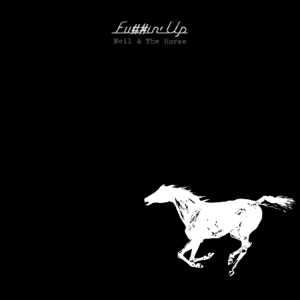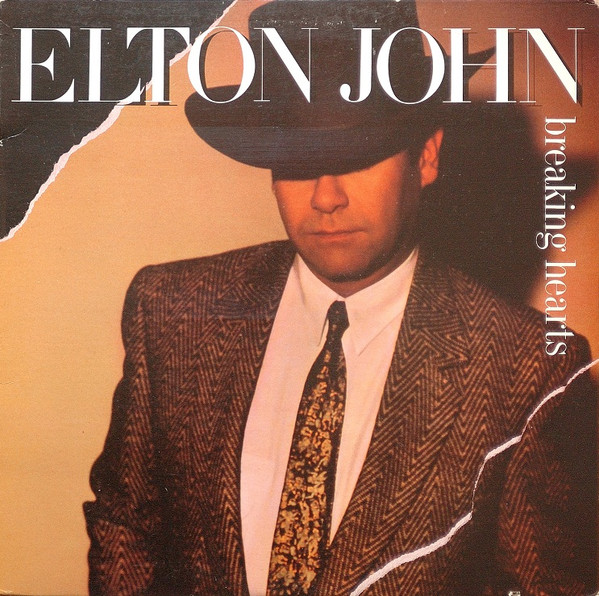
It really wasn’t that good a song to begin with. John had the barest verses, and just a sketch of a bridge; more to the point, it was even more dirgey than “Free As A Bird”. Like most of his piano songs, it was slow, and mildly morose. The surviving cassette, recorded at home in the Dakota, was marred by a consistent buzz, obscuring the piano and affecting the fidelity of the vocal. He was always more concerned with documentation and emotion than fidelity when composing while a tape ran anyway. It was a sketch, and nothing more, and who knows what he might have done with it given time.
The stature of “Now And Then” grew in Beatlemaniac circles as soon as it was revealed that a third song, to follow “Free As A Bird” and “Real Love”, would not be completed by the surviving Beatles in order to be included on Anthology 3. It became another one of those legendary lost tracks, heard only by insiders, and obsessed over by the same people who longed to hear “Carnival Of Light” or the 27-minute “Helter Skelter”, two further unreleased group performances, albeit from the ’60s.
But Paul kept talking about the song, even after George died, stoking interest among fans who still cared. He always seemed determined to finish it. There are several reasons for this; for one, Paul never liked leaving things undone. The Wings era is dotted with half-completed films, as well as a constant retinkering of an odds-and-sods collection called Cold Cuts. Even his most recent solo album featured a track developed from an outtake rediscovered while researching potential bonus tracks for the reissue of an earlier album.
Most of all, he never stopped missing John. Theirs was one of the 20th century’s great love stories, in addition to being a partnership that changed the world, and their public spat following the band’s breakup always rankled. After tempers cooled and lawsuits were settled, their paths crossed from time to time; allegedly, one of their final meetings was only a few months before John was killed. According to accounts, the last words he spoke to Paul were affectionate, along the lines of “Think about me every now and then, old friend.” [Emphasis added.] 21 years later, George was gone too, making any further reunion a mere footnote. (Since then, our hearts would leap anytime we saw images of Paul and Ringo together anywhere, whether on a stage or a red carpet.)
Clearly, the song meant a lot to Paul. Another twenty years went by until technology caught up to his dream of completing it. Thanks to the work Peter Jackson did on the Get Back project, Paul was able to incorporate vintage footage of John singing “I’ve Got A Feeling” on the Apple roof into his own performances of the song onstage in 2022. He wondered if Jackson’s AI program of isolating voices could be used on the “Now And Then” tape. Wonder of wonders, it could. From there it was a matter of incorporating George’s guitar from the aborted 1995 sessions, adding new bass, piano, and vocals himself, and flying in Ringo’s new drum parts and vocals, as these things are accomplished post-Covid, from Ringo’s own studio a continent and ocean away. Paul even put on his impression of a George-style slide guitar solo. Then Giles Martin collaborated on a string arrangement, weaved in some old harmonies Love-style, and the song was mixed. But how would it be offered out into a primarily digital world, where radio airplay meant nothing and vinyl was a pricey artifact for collectors?
Following months of rumors, the Beatles organization expertly stoked interest in the official reveal of the song—first with a countdown to something, illustrated by an image of a rewinding cassette, then the announcement of the upcoming unveiling of the song, teased with another week-away countdown. Adding it to an upcoming expansion of the Red and Blue albums on CD and LP—despite the fact that it was first conceived after well after the release of an album that had a cutoff of 1970 in its title—was daring, to say the least. All some of us wanted was a simple CD single with the superior 2015 mixes of “Free As A Bird” and “Real Love” that smoothed out some of the Jeff Lynne bombast and enhanced John’s voice further. Instead, the announced single was to be available in a variety of vinyl variants, and even on cassette, all backed with yet another appearance of “Love Me Do” (the original single version with Ringo on drums) with the idea that their last song should only be accompanied by their first song. The cover art was minimalist—some said half-assed—and only slightly alluded to the cover art of the Red and Blue albums, lining up with the balcony on each. (A CD single containing the two songs was finally announced for purchase exclusively via The Beatles Store a day before the final countdown completed.)
The release date was bracketed by two new films, unleashed the day before and after the song premiered. First came a 12-minute documentary telling the story of the song’s evolution, loaded with lots of old footage and shots of the Threetles working together in 1995. Seeing a later clip of George in the context of his passing was poignant on its own, but then we came to the revelation of what Jackson’s technology accomplished, and there it was: John’s voice, loud and clearer than ever, isolated and bare. The world lost a lot when we lost John, but we’ll never get over the loss of that voice—that voice—arguably the greatest, most influential voice in rock ‘n roll.
Peter Jackson’s commissioned promo video for the song hit all the right spots, melding familiar and truly rare footage, while touching on familiar images. Some of the manipulation bordered on corny, but the overall theme was the power of memory and the place the Beatles have in ours, and undoubtedly each other’s. He said he wanted to celebrate their irreverence and humor as well as tug the heartstrings, and he succeeded. Our favorite moment is from 3:03 to 3:07; look for it. As George said himself in Anthology, “God, we had fun in those days.” (It has been pointed out that this was Jackson’s shortest film ever, unless you count the Get Back preview from December 2020.)
Despite what we presume are Paul’s contributions to the finished song’s structure, “Now And Then” still isn’t any great shakes. There’s a mournful overtone to it—too bad John didn’t leave any unfinished rockers behind—and the sad, dull lyrics have us wondering what was going on with Yoko when they came to him. (Surely he wasn’t really singing about Paul, or the Beatles, as has been surmised?) Outside of That Voice, the track only soars on the middle eights and the instrumental break. But if you liked “Free As A Bird” and “Real Love”, it completes the suite. Paul’s piano matches John’s template, Ringo’s drums are spot-on as ever, and while we can hear George’s rhythmic strumming here and there, knowing he didn’t play the solo deepens his loss. Paul counts in the track, and Ringo is heard saying “good one” just as it ends. The strings are subtle and therefore effective, while the manipulated backing vocals fill in the spaces without being parodic. We half expected it to end on a resolved major chord, but even that would be too much. Although just over four minutes long, it seems to end too quickly. But it’s still historic just for what it is, and we really like it a lot, even after dozens of plays. Considering over 25 years passed between the band’s breakup and the Anthology project, and even more time passed between that and the completion of this song, how can this music continue to seem so, well, timeless? That its official B-side is over 60 years old is just insane.
The Beatles story contains so many what-ifs. John’s murder made a lot of things impossible. But thanks to Paul and Ringo, both over 80 years old, with the blessings and encouragement of Olivia and Dhani Harrison, Sean Lennon, and Yoko Ono, those four guys continued to share their magic, their gifts with us all. Wherever John and George are now, they should be very pleased.

























